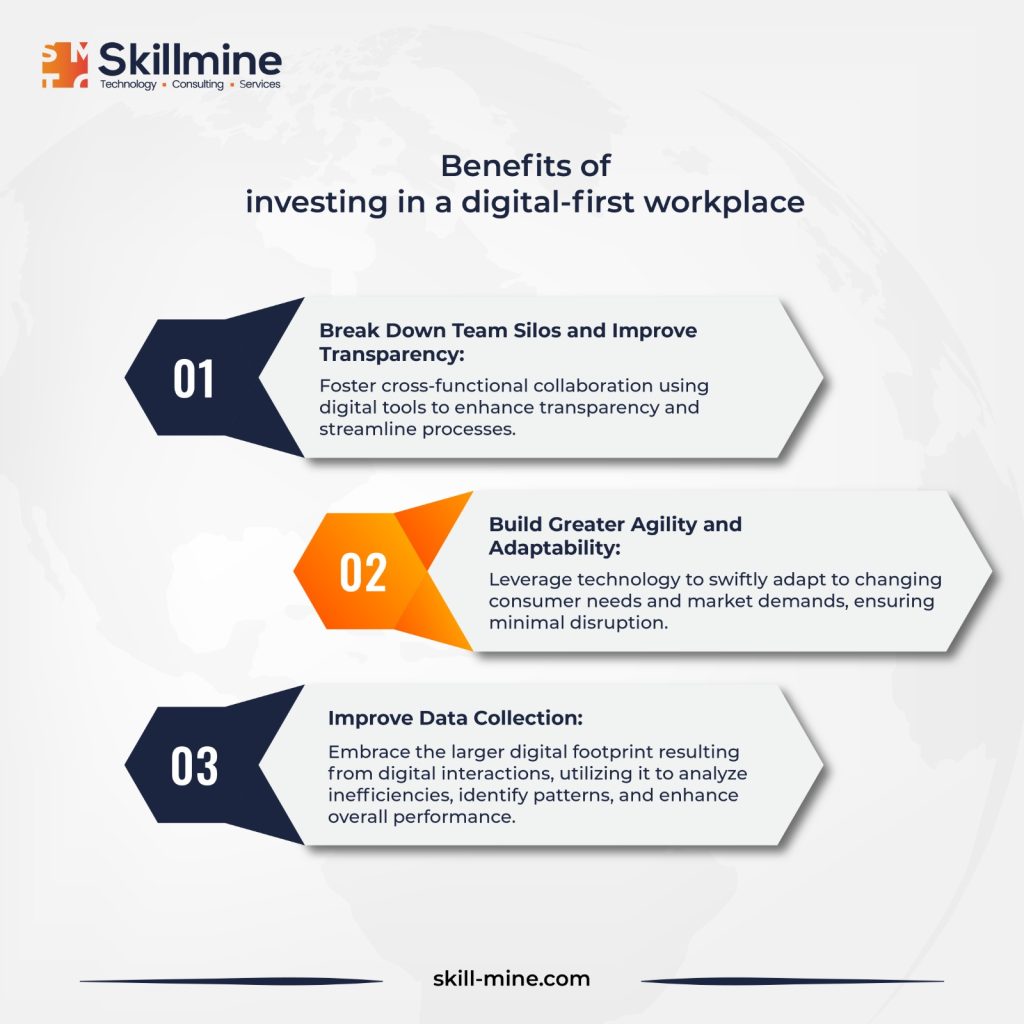By 2026, global digital transformation spending is forecast to reach 3.4 trillion U.S. dollars. According to a McKinsey Global Survey 2022, the acceleration of digitization in customer interactions and internal operations has surpassed expectations by three to four years. Additionally, the evolution of digital or digitally enabled products has outpaced projections by an impressive seven years.
Although the prevalence of digitally transformed enterprises is on the rise, establishing a successful digital-first culture poses challenges. It’s crucial for businesses to understand the essence of a digital-first approach and its potential benefits.
What is a Digital-First Culture?
Establishing a digital-first culture goes beyond mere technology integration. It entails crafting an agile organization where technology collaborates seamlessly with corporate culture to enhance processes, optimize efficiencies, and deliver an unparalleled customer experience.
To attain this, business leaders must prioritize instilling a digital-first mindset, ensuring every employee is digitally adept and comfortable embracing new technologies.
Unlocking the potential of a digital-first culture is more than adopting the latest technologies; it’s about cultivating an agile environment where technology and corporate culture synergize to enhance processes and elevate customer experiences.

Strategies to build a thriving digital-first culture
- Focus on the People: Unlocking the full potential of technology requires more than just its adoption; understanding and utilizing it effectively are paramount. Resistance to change is common among people, and introducing new technology without proper support can lead to undesired outcomes. Address concerns promptly, especially those related to job security, by implementing robust training and transparent communication strategies. Assess the team’s skill levels, provide tailored job-specific training, and emphasize the positive impact of digitization on enhancing employees’ value to the company. This proactive approach ensures a successful transition to a digital-first culture.
- Start from the Top: Establishing a corporate culture hinge on senior management. The values proclaimed on your website or displayed on office walls only resonate if mirrored by managers and executives. In cultivating a digital-first culture, leaders play a pivotal role, championing the approach in every action. Consistency from leadership is the linchpin of a thriving digital-first ethos.
- Embrace Technology: In the modern workplace, the strength of your organization is directly linked to the digital readiness of its least-digitized business unit. Focusing on empowering specific departments while neglecting others means overlooking vital efficiencies that digital transformation can bring across all aspects of your business.
Digitization not only mitigates the risk of data loss but also ensures seamless access to critical information. Therefore, it’s imperative to maximize integration among various tools, enabling different business functions to operate with optimal efficiency.
For instance, instead of maintaining separate platforms for sales and marketing, opt for a unified solution or establish integrations to facilitate seamless data flow. Alternatively, if you utilize separate tools, platforms like Zapier can bridge the gap and facilitate integration between them.
- Communicate a Shared Vision: Managers, executives, and employees share a unified objective: the success of the business. However, McKinsey reports that nearly 70% of change programs fail due to employee resistance and a lack of management support. To circumvent this, engage your employees in the change process. According to the same McKinsey study, initiatives where individuals feel involved in the transition are 30% more likely to last.
When crafting job descriptions, explicitly outline the expected technical tools, skills, and working style. Apply this approach to both existing employees and potential hires. Promoting clear expectations and transparency significantly contributes to fostering a collective digital-first mindset.
Conclusion
In an era dominated by online interactions and remote work, embracing a digital-first culture is imperative for any business aiming to remain competitive. Although implementing such a culture demands substantial changes in our business approaches, the potential rewards are genuinely transformative.
Looking for expert technology consulting services? Contact us today.





